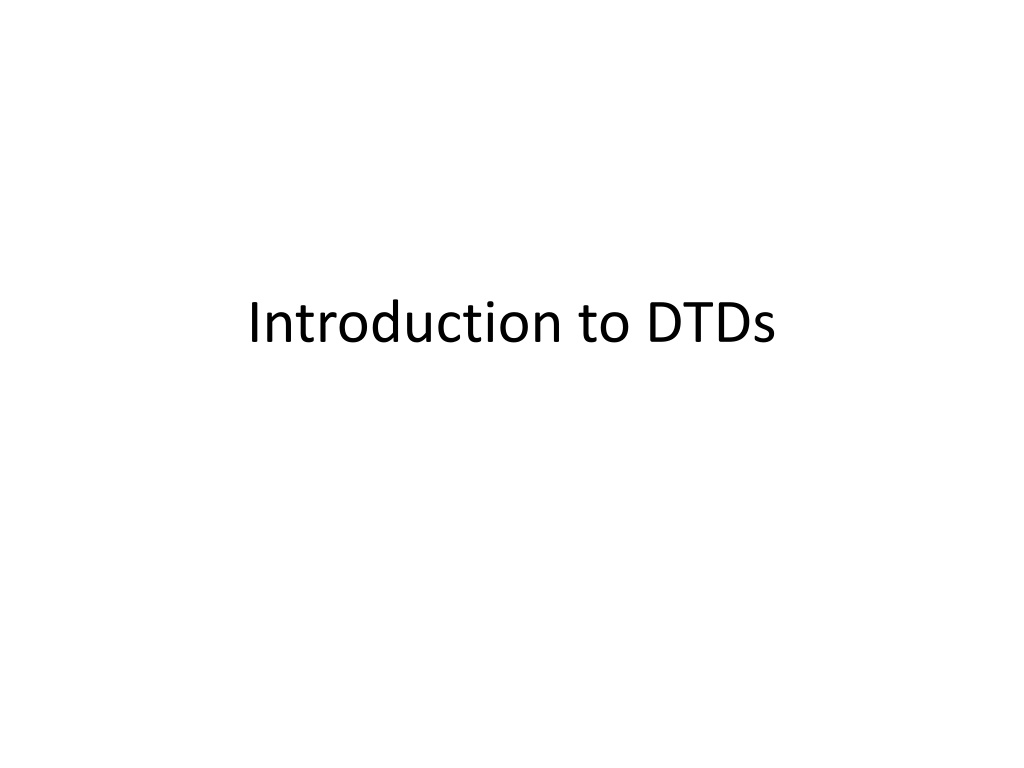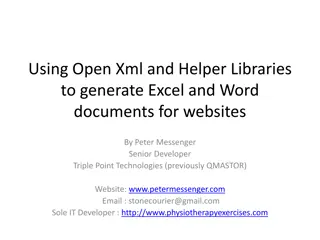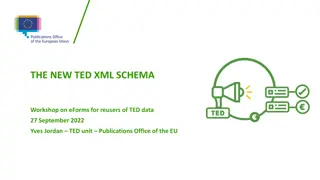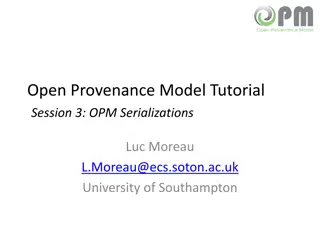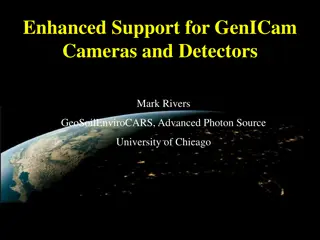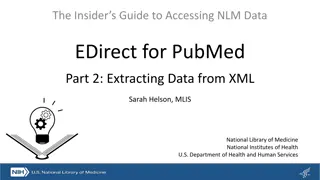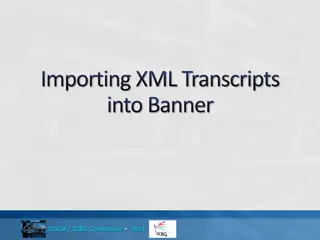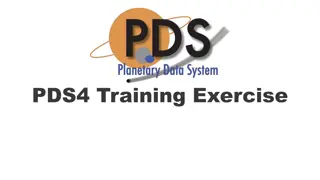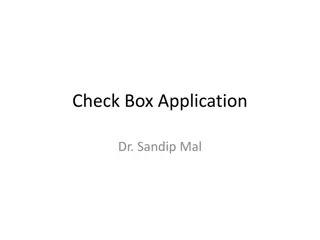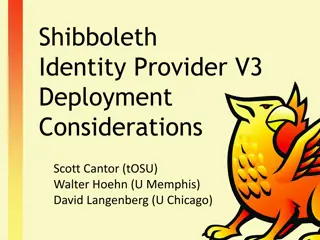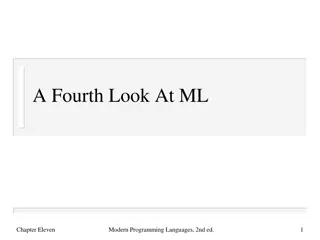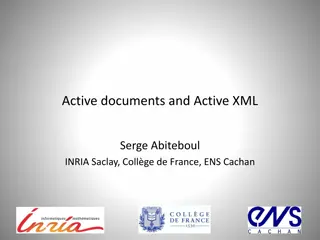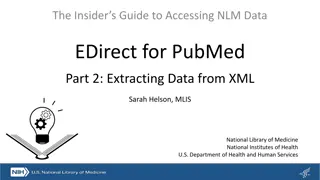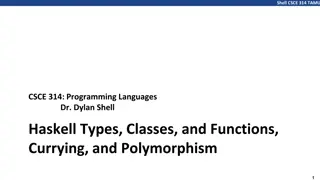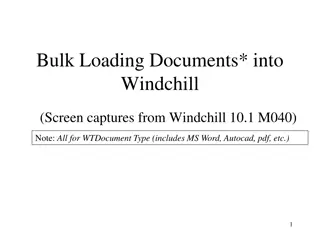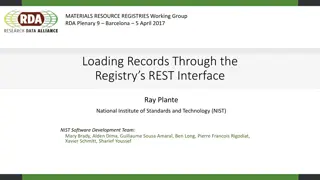Understanding Document Type Definitions (DTDs) in XML
Explore the world of Document Type Definitions (DTDs) in XML, which act as blueprints for structuring and governing XML documents. Learn how DTDs help in organizing information, controlling document markup, and ensuring the validity of XML content. Uncover the capabilities and limitations of DTDs, along with their role in shaping markup languages and document structures.
Download Presentation

Please find below an Image/Link to download the presentation.
The content on the website is provided AS IS for your information and personal use only. It may not be sold, licensed, or shared on other websites without obtaining consent from the author. Download presentation by click this link. If you encounter any issues during the download, it is possible that the publisher has removed the file from their server.
E N D
Presentation Transcript
Introduction We learned: how to make our own tags how to structure information using the rules and grammar of XML what well-formed /legal XML How can we systematize how our XML documents are created?
Building XML Documents We need blueprints or schema to design our XML documents DTDs are like blueprints for XML DTDs give us a plan for how to build XML DTDs is a technology that allows us to build XML documents that won't fall down
Document Type Definitions Document Type Definitions or DTDs will allow us to control how we mark up our XML documents They are a blueprint or schema for how to design an XML document Most importantly, it allows us to design our own markup languages Similar to data dictionaries as with database technologies
Document Type Definitions Document Type Definitions allows you to constrain and control the content of your XML documents Dictates what will appear in your documents Controls what, where, and how many instances of a certain XML tags may appear
DTD can do many things It can specify the document grammar like language Specifies: Elements Attributes Nesting Ordering Number of occurrences (cardinality)
Document Type Definitions DTD can be declared within the XML document, but are most often written as a separate document DTDs allow organizations a way to develop an agreed upon language and information structures For our assignments, we will use external DTDs
Disadvantages of DTDs DTDs are older XML technology, and have certain limitations They lack some flexibility Not written using XML syntax, they are NOT XML No data typing (can t limit to string or integer) Limited ability to dictate structure of doc No support for namespaces
Advantages of DTDs Compact and easy to use Can be defined within the XML document Can define entities Widely accepted and supported by most parsers DTDs are mature technology
DTDs Enable Standards enforce how XML is written DTD itself is a standard that communities can rely on The library, archives, museum, and literature communities all have DTDs that regulate how their XML is created
MARC to MARC XML Henriette Avram Roy Tennant -Mark up standards have been around long before XML came along -MARC became a national standard in 1971 (NOT XML!) -In mid 1990s a DTD was developed to move MARC to MARCXML -Eventually, the Standard was moved to XML Schema
Organizations and Communities May Exchange Data
All kinds of data exchange Encoded Archival Description (EAD), used by archivists MARC XML, used by librarians Keyhole Markup Language (KML) used by Google Earth Really Simple Syndication (RSS) used for publishing blog updates Election Markup Language (EML)
Validation Using the process known as Validation, various communities can ensure that their XML complies with a standard data format Ensures consistency in the XML we create and share Goldberg talks about Validation in Chapter 8 Validation is the method for verifying whether or not your XML document has followed a given DTD s rules correctly
Validation Invalid XML
Quick DTD notes DTDs are not really XML, so your editor will not display them in an XML like fashion Don t confuse them with Doctype Declarations, sound similar but not the same. They are fading in popularity, but are still used widely
Limitations of DTDs Non-XML syntax -Although DTDs do have the angled bracket syntax (for example, <!ELEMENT >), this is quite different from the basic XML syntax. We cannot use multiple DTDs to validate one XML document. We can include only one DTD reference inside an XML document. Although parameter entities make things slightly more flexible, their syntax is quite cryptic. No DOM (Document Object Model) support
